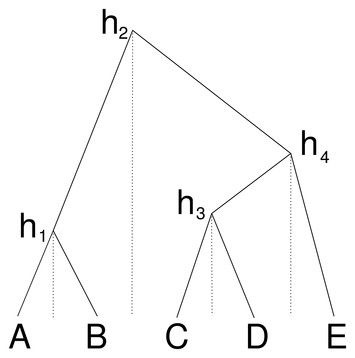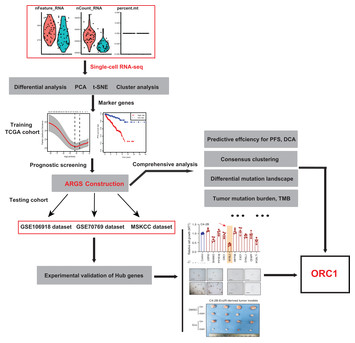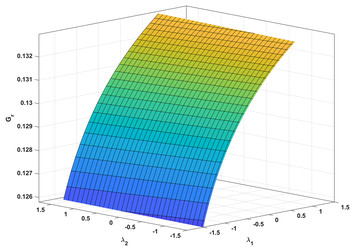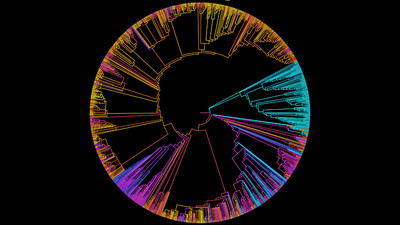PeerJ Section
Bioinformatics and Genomics
Welcome to your community’s home at PeerJ. Sections are community led and exemplify a research community’s shared values, norms and interests.
The citation average is 8.2 (view impact metrics).
56,112 Followers
Section Highlights
View all Bioinformatics and Genomics articles 

30 April 2024
Analysis of drought and heat stress response genes in rice using co-expression network and differentially expressed gene analyses
"Climate change including drought and heat stress is a major issue for rice farming. This study provides significant insights into the molecular mechanisms of drought and heat stress using available data from the public domain."
 Mather Khan, Handling Editor
Mather Khan, Handling Editor
 Mather Khan, Handling Editor
Mather Khan, Handling Editor

29 April 2024
Variational Bayesian phylogenies through matrix representation of tree space
"Large scale phylogenetic inference is computationally intractible, and many suboptimal heuristics are employed to infer robust trees. This paper explores the use of a restricted relational search space to identify plausible trees with less computational effort."
 James Procter, Handling Editor
James Procter, Handling Editor
 James Procter, Handling Editor
James Procter, Handling Editor

29 March 2024
An androgen receptor-based signature to predict prognosis and identification of ORC1 as a therapeutical target for prostate adenocarcinoma
 Huashan Shi, Handling Editor
Huashan Shi, Handling Editor

22 March 2024
Comprehensive analysis of peroxisome proliferator-activated receptors to predict the drug resistance, immune microenvironment, and prognosis in stomach adenocarcinomas
"This study investigated the involvement of Peroxisome proliferator-activated receptors (PPARs) in stomach adenocarcinomas (STAD).
Firstly, it sheds light on the crucial role of PPARs in the initiation and progression of STAD, providing valuable insights into the molecular mechanisms underlying this type of cancer. Understanding the relationship between PPARs and immune status, molecular mutations, and drug therapy in STAD is essential for advancing diagnostic and treatment strategies.
Secondly, the findings of this study reveal the potential clinical implications of targeting PPARs in the management of STAD. The identification of abnormal expression patterns of PPARA, PPARD, and PPARG in STAD samples and cell lines, as well as their associations with clinicopathologic features, prognosis, tumor microenvironment, genome mutation, and drug sensitivity, highlights the importance of considering PPARs as therapeutic targets in STAD.
Lastly, the study's comprehensive approach, integrating analysis of gene expression profiles, co-expression patterns, regulatory pathways, and functional experiments in cell lines, provides a thorough understanding of the role of PPARs in STAD. The identification of potential treatment drugs and the demonstration of the functional effects of inhibiting PPARG on cell viability, migration, and invasion further emphasize the clinical relevance of targeting PPARs in STAD therapy.
This article not only deepens our understanding of the molecular mechanisms underlying STAD but also highlights the potential of PPARs as novel targets for therapeutic interventions in this type of cancer, ultimately impacting the field by providing new avenues for the development of effective treatment strategies for STAD."
 Fanglin Guan, Handling Editor
Fanglin Guan, Handling Editor
 Fanglin Guan, Handling Editor
Fanglin Guan, Handling Editor

29 February 2024
Research and experimental verification on the mechanisms of cellular senescence in triple-negative breast cancer
"The findings of the study have significant implications for the field of breast cancer research as follows:
1. Understanding Triple-Negative Breast Cancer (TNBC): TNBC is an aggressive breast cancer subtype characterized by high heterogeneity, poor prognosis, and limited treatment options. This study provides insights into the cellular senescence-related characteristics of TNBC patients, which have been poorly understood thus far. By investigating the role of cellular senescence in TNBC, this research contributes to a better understanding of the underlying mechanisms driving TNBC progression.
2. Molecular Subtyping and Prognosis: The study identifies three distinct molecular subtypes of TNBC based on cellular senescence-related pathways. These subtypes exhibit differences in gene expression levels, prognosis, and immune infiltration. Such molecular subtyping is crucial for personalized treatment strategies and prognostic assessments. The findings provide valuable information for clinicians to tailor treatment plans based on the specific molecular subtype of TNBC patients, potentially improving patient outcomes.
3. Implications for Immunotherapy: The study highlights the importance of immune infiltration and immune escape in TNBC. The identified molecular subtype with high immune infiltration (clust 3) is associated with a higher likelihood of immune escape and reduced responsiveness to immunotherapy. This information is critical for selecting suitable patients who are more likely to benefit from immunotherapy interventions, thereby optimizing treatment decisions and potentially improving therapeutic efficacy.
4. Development of a Risk Model: The construction and validation of a risk model using identified feature genes provide a practical tool for assessing the prognosis of TNBC patients. This risk model incorporates molecular characteristics and can aid clinicians in predicting patient outcomes and making informed decisions regarding treatment strategies.
5. Experimental Validation: The study conducts experimental validation through quantitative reverse transcription-polymerase chain reaction (qRT-PCR) and cellular assays, confirming the expression patterns and functional relevance of identified hub genes. This strengthens the reliability and translational potential of the findings, facilitating the potential translation of these findings into clinical practice.
This article significantly advances our understanding of cellular senescence-related characteristics in TNBC and their impact on patient prognosis, immune infiltration, and response to therapy. The findings have practical applications for personalized treatment approaches, prognostic assessments, and the development of targeted therapies for TNBC patients. Additionally, the study sheds light on the molecular mechanisms underlying TNBC progression, providing a foundation for further research in this field."
 Fanglin Guan, Handling Editor
Fanglin Guan, Handling Editor
 Fanglin Guan, Handling Editor
Fanglin Guan, Handling Editor

26 February 2024
Mathematical modelling of antibiotic interaction on evolution of antibiotic resistance: an analytical approach
"Quantitative modelling of antibiotic resistance is a popular research area, where alternative approaches needs to be developed and tested. This study contributes to the antibiotic resistance evolution modelling field."
 Efe Sezgin, Handling Editor
Efe Sezgin, Handling Editor
 Efe Sezgin, Handling Editor
Efe Sezgin, Handling Editor

23 February 2024
Predicting early-onset COPD risk in adults aged 20–50 using electronic health records and machine learning
 Swapneeta Date, Handling Editor
Swapneeta Date, Handling Editor

21 February 2024
DNA mini-barcoding reveals the mislabeling rate of canned cat food in Taiwan
"Information on accurate content in pet food is an important area of research, providing information to pet owners regarding the actual nutrition, but also as mentioned in the manuscript, other issues related to sustainability and species conservation."
 Brenda Oppert, Handling Editor
Brenda Oppert, Handling Editor
 Brenda Oppert, Handling Editor
Brenda Oppert, Handling Editor

14 February 2024
Fine-scale mapping of chromosome 9q22.33 identifies candidate causal variant in ovarian cancer
"The article advances our understanding of the pathogenesis of ovarian cancer."
 Philip Coates, Handling Editor
Philip Coates, Handling Editor

1 February 2024
In silico and in vitro evaluation of the anti-virulence potential of patuletin, a natural methoxy flavone, against Pseudomonas aeruginosa
"This study suggest significance of Patuletin as a potential therapeutic agent in combination with antibiotics to combat antibiotic-tolerant P. aeruginosa infections. It will help to generate more effective antibiotics for antibiotic resistant microbes."
 Mohammed Kuddus, Handling Editor
Mohammed Kuddus, Handling Editor
 Mohammed Kuddus, Handling Editor
Mohammed Kuddus, Handling Editor
56,112 Followers







